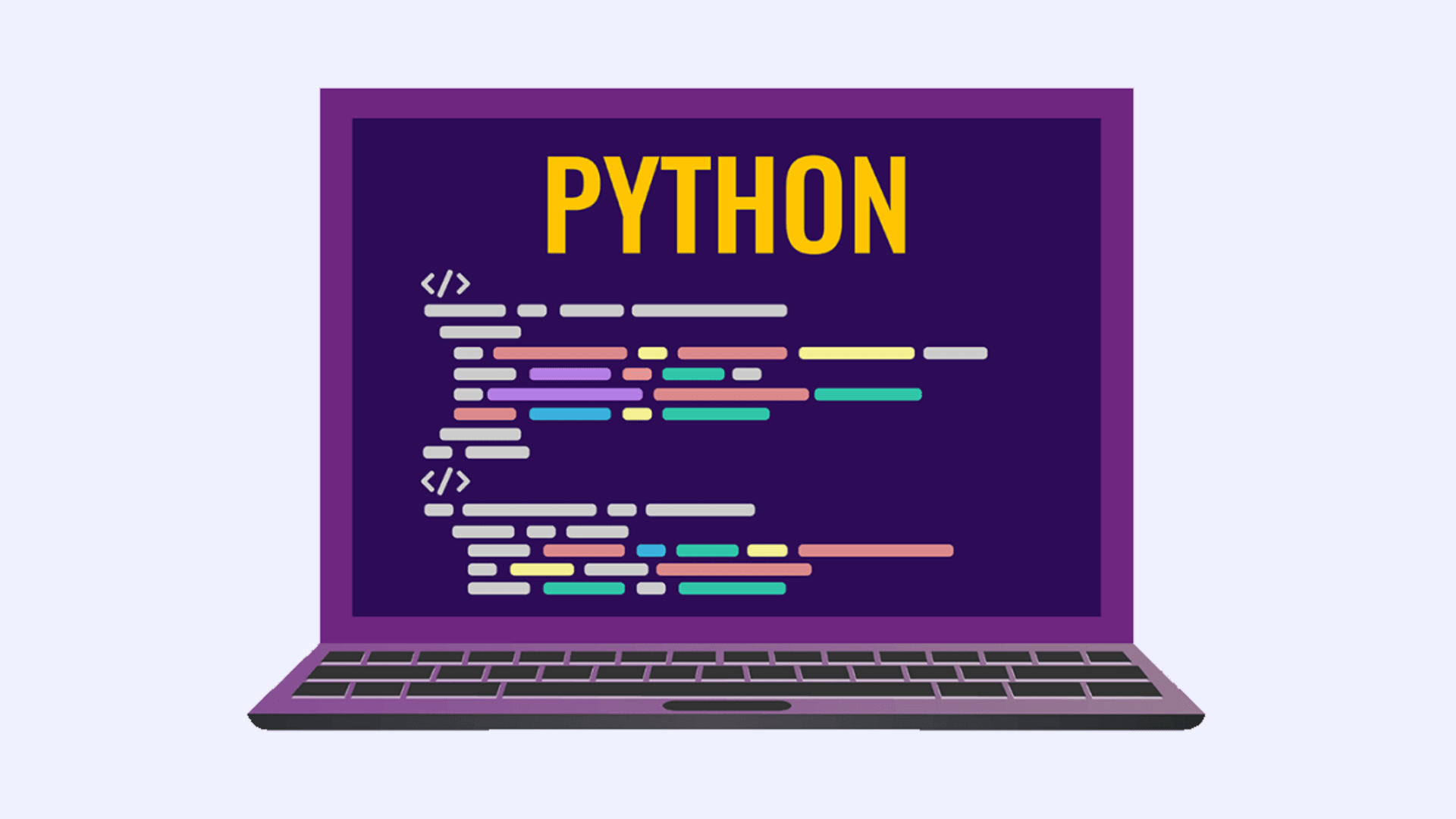One of the best things about Python is how easy it is to learn. Of all the programming languages on the market, none is as simple as Python. And even though the language is very beginner-friendly, that doesn’t mean it’s limited in what you can do. When you first start your journey with this language, you’ll find that creating text-based applications is remarkably easy. With two simple lines of code, you can create the popular Hello, World! application. That code looks like this:
# This program prints Hello, world!
print('Hello, world!')
Run the program, and it would print out:
Hello, world!
Although that is overly simple, you can create fairly complex text-based Python applications. For some, however, text-based applications aren’t exactly the best option. This is especially so when those applications will be used by people (clients, consumers, customers) who aren’t exactly accustomed to using non-GUI applications.
Thankfully, it is possible to create GUI applications with Python. Let’s keep with the Hello, World! application. Using a GUI framework, you can create the graphical version of Hello, World! like so:
# Python tkinter hello world program from tkinter import * root = Tk() a = Label(root, text ="Hello World") a.pack() root.mainloop()
The important thing to notice above is the use of tkinter, which is a library for Python that makes it possible to create user interfaces and full-fledged GUI applications. There are quite a few libraries for the language, and because it’s so popular, you shouldn’t have any problem finding a Python development company to help you create a well-designed GUI application for your company.
Why Is Choosing the Right GUI Framework for Python Important?
As you probably expect, you cannot facilitate Python GUI development without making use of one of the many GUI frameworks. However, you can’t just choose any random Python GUI framework. For example, some frameworks can only be used with specific operating systems. Other Python GUI frameworks aren’t stand-alone and depend on other GUI frameworks. Moreover, some Python GUI frameworks can be used to create only specific types of GUIs or certain aspects of a GUI.
Because of these issues, it’s important to choose the right framework for your Python GUI project.
Fortunately, there are plenty of frameworks to choose from, and some of them support cross-platform applications and can take care of all your GUI needs.
Let’s take a look at some of the best options on the market.
Things to Consider When Choosing a Python Graphical User Interface

As mentioned previously, there are certain things you must consider when choosing a Python GUI framework. Such considerations include the following.
- OS-specific: If your application will be native to a specific operating system only, as opposed to multiple platforms, you must make sure the library you choose supports that OS. If you plan on releasing your application to multiple platforms, you’ll want to make sure the library supports all targeted OSs.
- GUI needs: If you know the necessary elements of your GUI (such as clickable buttons, drop-downs, forms, windows, and other controls), you must know if the GUI framework is capable of drawing and controlling those elements.
- Support for multiple versions: Although Python 2 has reached end of life, there are still people and companies using it. When selecting a GUI framework, make sure it supports the version of Python that you use.
- Extension support: You might be using multiple extensions for your application (such as OpenGL or GTK). If so, make sure the GUI library you choose supports those extensions.
- Support: Does the framework you’ve selected have a thriving community of Python developers? If not, you might consider a different GUI, as help could be hard to come by and the framework itself may not be around for long.
Now that you understand what a Python GUI framework is and what to consider when making your selection, let’s examine some of the best frameworks available.
The 8 Top Python GUI Packages & Libraries
Although you might find a large number of popular Python GUI frameworks, not all of them are equally viable options. The eight you see below are all vetted and worth your consideration.
PyQT5
PyQT5 is probably one of the most popular Python GUI frameworks on the market. Built around the PyQT package, this framework makes it easier to create all types of applications for just about any platform. PyQT5 supports Android, iOS, Linux, macOS, and Windows.
What makes PyQT5 stand out is its use of QtGUI and QtDesigner, which provide for the drag-and-drop means of implementing visual elements for your GUI applications. Even better, if your Python developers prefer to program those elements via code, they have that option as well.
Key Features // Product Highlights
- Over 600 classes covering a wide range of needs.
- Supports both the 4.x and 5.x versions of the Qt framework.
- Supports SQL databases.
- Supports web toolkits for building web applications.
- Supports XML processing.
- Has a huge library of widgets.
- Very flexible when dealing with GUI events.
- Supports a wide array of native platform APIs.
| PROS | CONS |
| Very versatile. | Fairly steep learning curve. |
| Large selection of UI components. | Lack of Python-specific documentation for classes. |
| Very active community with tons of learning resources. | Requires separate installation from Python. |
| Supports most operating systems (both desktop and mobile). |
Tkinter
Tkinter comes preinstalled with Python, so there’s no need to install anything else to create a GUI application. And, like Python itself, Tkinter is very easy to learn and use. Because of these two reasons, Tkinter is the best GUI library to use for those new to Python.
Each Tkinter widget includes a different level of customization, meaning some widgets have few customizations, while others offer plenty. You’ll find widgets for things like frames, buttons, check buttons, labels, file dialogs, and canvas.
Tkinter is an open-source library and offers a syntax that is very much in line with the simplicity of Python code.
Key Features // Product Highlights
- Requires zero dependencies.
- Portable, so you can create graphical user interfaces for nearly all OSs.
- Python scripts that use Tkinter do not need to be modified when porting from one platform to another.
- Easily themeable.
| PROS | CONS |
| Easy to learn and use. | Limited in what it can do. |
| Flexible. | Best used for very simple GUI applications. |
| Stable. | No advanced widgets |
| Doesn’t require installation (since it ships with the default Python installation). | GUIs have a very old-school look and feel. |
| Very user-friendly syntax. | Slightly slower (due to the layered approach) than other libraries. |
PyGUI
Like PyQT5, PyGUI must be installed separately from Python. To install PyGUI, you must use the pip installer (which is included with Python). On the upside, however, this is a lightweight API, so there’s very little code required to bridge the app to the hosting platform. Although PyQUI isn’t supported on mobile apps, it can be used to create GUIs for Linux, macOS, UNIX, and Windows.
PyGUI also supports numerous Python extensions, such as OpenGL and GTK. With PyGUI, you can create GUI elements such as buttons, radio buttons, and menus.
Key Features // Product Highlights
- All-inclusive, so there’s nothing else to install for the creation of Python GUI applications.
- Works seamlessly with Python data types.
- GUI applications are small and lightweight.
- Supports both Python 2.x and 3.x
| PROS | CONS |
| Documentation is all written in Python. | It must be installed separately via pip. |
| Open source. | Does not support mobile platforms. |
| Does not support applications. |
Kivy
Kivy is a framework designed for creating more modern-looking interfaces with Python. Kivy is an OpenGL ES2 accelerated framework that supports Android, iOS, Linux, macOS, and Windows. With over 20 widgets in its toolkit, Kivy is a fairly flexible option for creating the most intuitive user interfaces.
Kivy was written in Python and Cython and can even build multi-touch applications that help to implement a natural user interface (NUI), which makes it easier for the user to easily learn the different types of interactions required for an application.
Key Features // Product Highlights
- Extensive collection of multi-touch enabled widgets.
- Includes the Kv languages for designing custom widgets.
- Supports multiple input devices, such as mouse, keyboard, TUIO, and multi-touch (such as touchpads and phone screens).
| PROS | CONS |
| Same code can be used on all supported platforms. | GUIs will appear non-native. |
| Open source. | The package size is considerable. |
| Applications are very fast. | Poor community support. |
| Can be used for game development. | Lack of documentation. |
wxPython
This Python GUI library simplifies the process of creating native-looking UIs without adding extra overhead to the application. With wxPython, you can create applications for Linux, macOS, UNIX, and Windows.
wxPython includes a large number of widgets, all of which look very good across every supported platform without the need to customize them.
Key Features // Product Highlights
- Very large number of included widgets.
- GUIs look and feel like native applications, regardless of platform.
- It’s a very flexible GUI framework.
- Large, active community.
| PROS | CONS |
| Supports both Python 2.7 and 3.x. | Requires installation with pip. |
| Cross-platform. | Development is so active there are often bugs introduced. |
| Open source. | |
| Very active development. |
PySimpleGUI
PySimpleGUI is simple enough to use that even Python beginners can quickly create GUI applications. In fact, PySimpleGUI might be the easiest Python GUI framework on the market. So, if you have a number of new Python developers, this might be the perfect framework to get them started.
One thing to keep in mind with PySimpleGUI is that it relies on other frameworks, specifically Qt, Tkinter, wxPython, and Remi. Because of this, developers can choose the GUI framework they want to use and will have immediate access to all of the elements that are included with their choice. This also makes PySimpleGUI fairly flexible, as it’s not limited to a single GUI framework.
Key Features // Product Highlights
- Uses the REMote Interface Library to construct GUIs that can be rendered on a web page.
- Names of GUI elements (as well as their properties and methods) are the same across all four packages.
| PROS | CONS |
| Open source. | Only supports Python 3. |
| Cross-platform. | Requires installation via pip. |
| Very shallow learning curve. | |
| Plenty of documentation and tutorials. |
Libavg
Thanks to support for hardware acceleration, Libavg is one of the best Python GUI libraries for developing Python iOS and Android apps for modern touch-based devices.
Libavg includes a number of key features for mobile phones, such as support for cameras, animation, text alignment, and GPU effects. There’s also support for rotation, scaling, blending modes, and cropping. Clearly, Libavg was purpose-built for mobile applications.
Key Features // Product Highlights
- Numerous widgets and features.
- Written in C++ so it’s fast.
- Includes an advanced screen layout engine.
| PROS | CONS |
| Supports common drivers for touch screens. | Requires installation with pip. |
| Open source. | |
| Supports Python 2.7 and 3. | |
| Widely accepted as the best GUI framework for mobile applications. |
PyForms
PyForms is the Python implementation of Windows Forms and makes it possible to create interactive UIs for desktop (aka Windows), web, and terminal applications. To develop applications for each mode, you must work with either PyForms-GUI, PyForms-Web, or PyForms-Terminal.
PyForms also implements rules and methodologies to help developers write short, clean, readable, and reusable code.
Key Features // Product Highlights
- Uses a minimal API, so UIs can be defined with a few short lines of code.
- Advanced features can be added.
- Code is organized into modules.
- Fast prototyping.
- Easy application maintenance.
| PROS | CONS |
| Open source. | Requires installation via pip. |
| Cross-platform (Linux, macOS, Windows). | No support for mobile devices. |
| Doesn’t require significant changes to code when moving to a different platform. | Does not support Python 2.x |
| Can create desktop, web, and terminal applications. | Not capable of handling a large number of data fields. |
| Very shallow learning curve. | Does not support calling method functions of objects being browsed. |
Conclusion
And there you have it, the eight top Python GUI frameworks for you to consider when your business requires the creation of GUI applications. When your Python developers access one or more of these frameworks, they can build outstanding GUI apps with the simplicity of the programming language. And given some of these frameworks give your team a cross-platform GUI toolkit so there’s no limit to what you can do.
Before choosing a tool for Python GUI development, keep in mind the type of applications you want to build and their target platforms. You don’t want to find yourself in a situation where you’ve selected the wrong framework and have to back out of it and start all over. That kind of setback can be catastrophic in the agile world of big business.
Just remember, when using any of these frameworks, it will be essential that your developers follow Python best practices, to avoid any problems with the creation, deployment, or maintenance of your apps.
If you enjoyed this, be sure to check out our other React articles.









